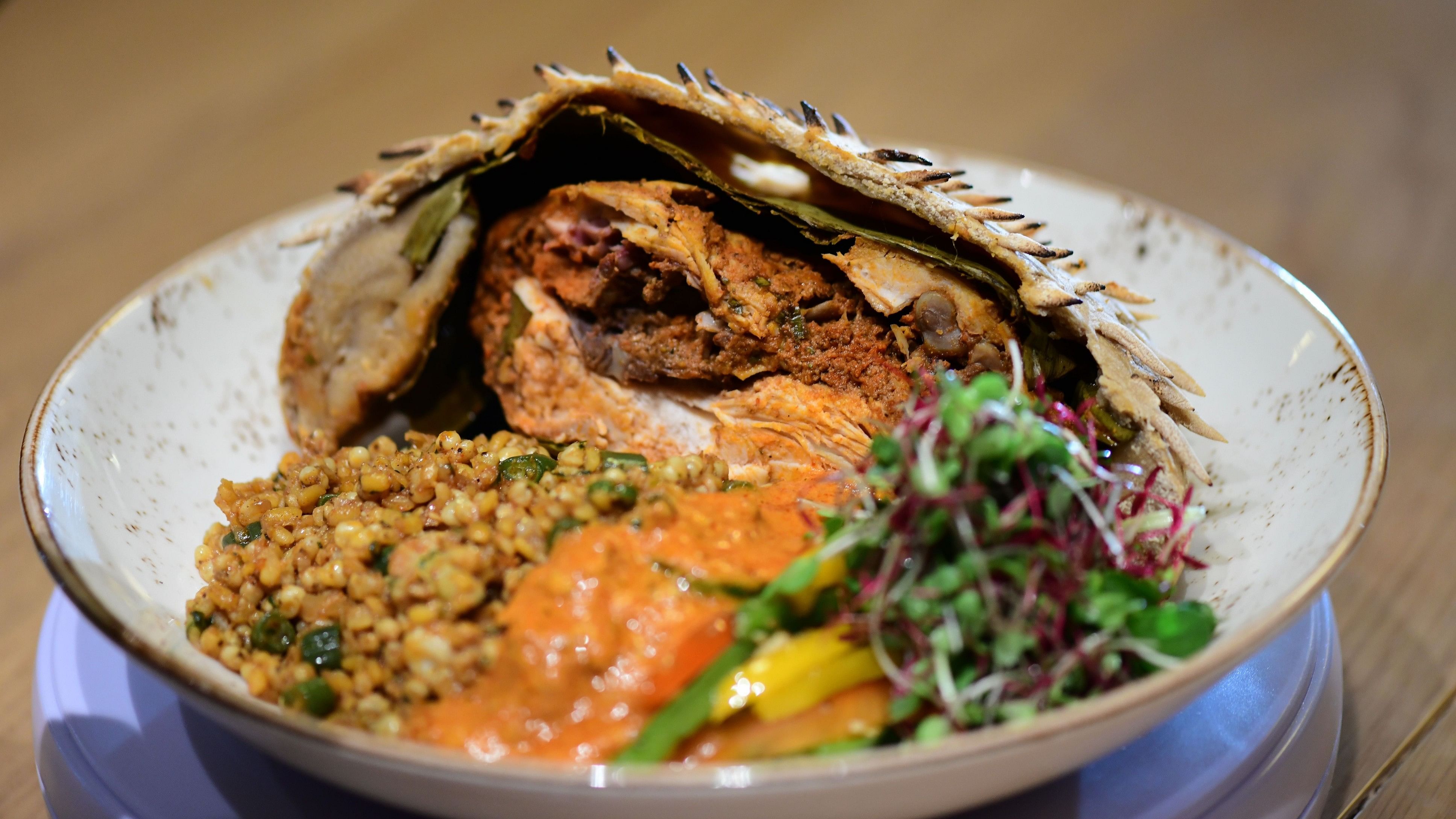
Atta chicken millet pulao.
Credit: Chef Vikas Seth
It’s hard to associate Durga Puja with pulao, or pulaka as mentioned in the Yajnavalkya Smriti, as it doesn’t immediately come to mind as a festival favourite. However, with a bit of prompting, two prominent names emerge: the bright yellow, fragrant, sweet, and spicy Basanti Pulao, and the simple yet addictive Sada Pulao, made with short-grain rice, ghee, fried cashews, and raisins, often paired with irresistible mutton curry or crispy fish fry.
But this wasn’t always the case, says culinary anthropologist Chef Sabyasachi Gorai. “In the early days, when the puja was confined to rajbaris, each household had its special pilaf recipe, a highlight of the festival alongside khichdi bhog. This medley of rice, ghee, and spices, whose aroma could be detected from a distance, often marked the beginning of the celebrations. “The tradition of pulao even carried over to the Durga Puja celebrations in the army, thanks to the first battalion of Gorkhas who are credited with introducing this ritual. According to Chef Gorai, “The highlight of the celebration was a decadent pulao made with the meat of the sacrificial goat.”
Interestingly, the tradition of making celebratory pulao during Durga Puja wasn’t limited to the wealthy. Bengali cuisine historian Chef Sumanta Chakrabarti explains, “It was a mark of distinction. Every household in both Bengals was known not just for the grandeur of their puja, but also for the pulao they served, whether it was meat-based, fish-based, or vegetarian. These opulent, short-grain, garam masala-infused, one-pot wonders inspired cooks to cross borders to learn and create their own versions.”
The essence of a great pulao, says Chakrabarti, lay in the fragrant short-grain rice, spices, and the method of cooking the meat. Among the showstoppers was the Ilish Pulao, according to Chef Koyel Roy Nandy of Sienna. Made from the belly of the fish, which is easy to de-bone, it has been a centrepiece of Durga Puja feasts since its rise to popularity in the early 17th century, coinciding with the festival’s establishment as an annual tradition. The availability of the prized Padma Hilsa made it even more special. “Originally, the pulao was a no-garlic-onion niramish dish, but over time, it evolved. Today, the dish is flavoured by yakhni made from the fish’s rendered fat, and the pulao is garnished with hilsa pieces and fried onions,” Chef Koyel adds.
The Rohu Tikli Pulao, which became popular in Odisha, where Sada Pulao and sweet Kanika rice dishes reigned, was inspired by the hilsa version but differed in that the fish was layered within the rice rather than used as a garnish. Chef Joymalya Banerjee highlights how this twin-preparation technique “laid the foundation for many variants, each with its own character.” For instance, Dhakai Morog Pulao, now a forgotten dish, uses short-grain rice and high-quality meat but stands out for its spices, the milk-to-water ratio, and the addition of apricot, raisins, and green chillies, before being finished in dum and served with hard-boiled eggs. Similarly, Mutton Tehari, though distinct from its Uttar Pradesh counterpart, uses mustard oil for frying the meat and birista (crispy fried onions), along with a special masala of cinnamon, mace, and small cardamom for its unique aroma and taste.
Chef Chakraborty notes that while many pulao recipes use similar techniques, each is different. He cites the Paroma Pulao as an example. “At first glance, it seems like a version of the Hilsa Pulao, but the first bite reveals a sweet, tangy flavour thanks to the inclusion of baby potatoes, ajwain, cherries, and saffron with rohu fish.” Another example is the Motonjan Pulao, which uses diced mutton, almond, cashew paste, and lemon for a distinct taste and texture. The Malai Golda Chingri Pulao features freshwater prawns and Gobindbhog rice cooked in coconut milk, while the luxurious Nagrongo Pulao, an Armenian-inspired dish, incorporates sugar, cholar sattu, dry fruits, and lemon for a delightful palate.
Thankfully, Chef Joymalya remarks, “the evolved techniques, which combined Mughal culinary elements like sugar and fried onions with local traditions, also produced fascinating vegetarian creations.” One such dish is the now-extinct Afeem Jole Pulao, a remarkable creation using yakhni with fresh turmeric, fennel, mace, bay leaf, and coriander. Once garnished with fried cashews, raisins, and even opium, it was served with mutton.
The subtle art of flavour-making also gave rise to simpler creations like the Amrit Pulao, which combines coconut, mango, and curry leaves, and the Mocha Bhuttal Pulao, made from the heart of the banana plant and a staple during puja celebrations.
Why, then, have these dishes faded from the spotlight? While some attribute it to the time-consuming, laborious preparation techniques and the rise of other dishes like biryani, legacy chef Vikas Seth, who recently recreated the famous millet pulao using the classic technique of Toholi Pulao, offers a different perspective. “Pulao was traditionally made with short-grain rice and a two-base technique,” Seth explains, “until French traveller Tavernier observed that the best rice for pulao was grown southwest of Agra. This rice was fluffy, with each grain separate, forever changing the pulao game and eventually blurring the lines between biryani and pulao.”
(The author is a seasoned food columnist and curator of experiential dining experiences, pop-ups and retreats for chefs.)